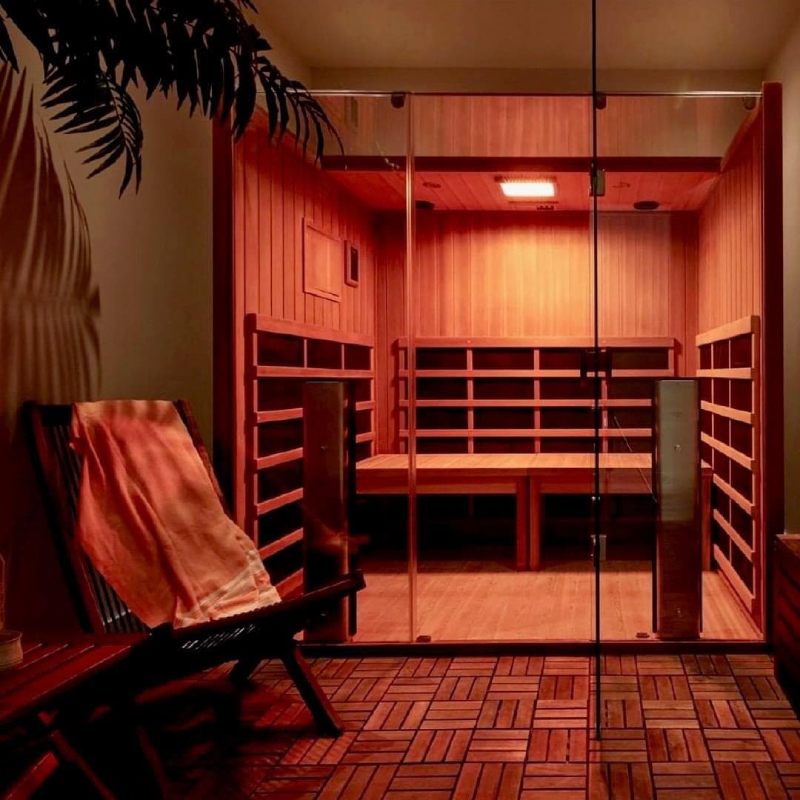
If you’ve been looking at buying a sauna recently, then you’ll have come across an important distinction: infrared sauna vs traditional sauna. On the surface, they might seem very similar, but they actually work in very different ways.
How Does a Traditional Sauna Work?
A traditional sauna works by heating the air, which in turn, heats your body. To create the heat, water is poured onto heated sauna stones which give the room its distinctive atmosphere.
The heat helps penetrate the body, easing pain, reducing stress levels, improving skin problems, and offering many other benefits. These benefits have been well known for a long time, and the earliest sauna is believed to date back to 2,000 BC.
How Does an Infrared Sauna Work?
Infrared saunas are a much more modern take on the sauna, and they bring all of the same benefits plus a few extras. They take the opposite approach to a traditional sauna by directly heating the body, with just a small percentage of the heat being absorbed into the air.

Infrared is an invisible light that’s naturally emitted from the sun, and it’s able to penetrate deep into the human body, bringing a number of benefits.
You still get that same sauna feeling, but traditional and infrared saunas work very differently to achieve it.
Infrared Sauna vs Traditional Sauna: Key Differences
There are some key differences between traditional and infrared saunas that should help you make a more informed purchasing decision.
Heating Mechanism
As mentioned, when it comes to infrared saunas vs traditional saunas, the key difference is the way they heat the people in the sauna. The traditional sauna does this by heating the air which then heats the person while the infrared sauna heats the person directly and the air is heated as a byproduct.
This allows infrared saunas to penetrate deeply into the body, producing a deep and relaxing sweat, and providing relief to hard-to-reach aches and pains.
Operational Temperature
Because of the different ways infrared and traditional saunas heat the body they work at different optimal temperatures. A traditional sauna works best at a temperature around 195 degrees Fahrenheit, whereas an infrared sauna works at a much lower temperature of between 115 and 130 degrees Fahrenheit.
This is because the process is much more direct. By the time the traditional sauna has heated the air, which has then passed to your body, it’s lost some of its heat, whereas the infrared heat goes straight to the body.
Energy Efficiency
By transferring energy directly to the body, infrared saunas are much more efficient than their traditional equivalents. Traditional saunas are thought to be around three times more expensive to run than an infrared sauna, and that’s mainly because of the additional electricity consumption.
Infrared saunas direct their energy on the person in the sauna, rather than the air, which means much less heat is lost during transference. Not only does this give you an excellent sauna experience, but it also means your bills are likely to be lower.
Warm-Up Time
An offshoot of the infrared sauna’s energy efficiency is that it doesn’t take long to warm up. If you’re weighing up an infrared sauna vs a traditional sauna, then this is something you might want to consider.
You might be using your sauna a couple of times a day for a handful of minutes, and you don’t want to spend all your time waiting for it to heat up. With our infrared saunas, you can get in after about 15 minutes of heating and still get the full benefits - it’s between 30 and 45 minutes with a traditional sauna.
Infrared Sauna vs Traditional Sauna Benefits
They might work in slightly different ways, but infrared saunas and traditional saunas offer very similar benefits. These are wide-ranging, and one of the reasons saunas have been so popular for so long.
- Weight loss and increased metabolism
- Muscle pain relief
- Immune system boost
- Detoxification
- Improve the appearance of cellulite
- Ease joint pain and stiffness
- Reduce stress and fatigue
- Improve skin
An infrared sauna does this by simply “cutting out the middle man,” delivering its healing qualities straight to your body rather than heating the air first.
Conclusion: Infrared Sauna vs Traditional Sauna
Both infrared saunas and traditional saunas offer brilliant health benefits, but they do so in a different way.
One of the key benefits of an infrared sauna is that it offers the same great benefits in a more efficient way. Rather than heating the air to heat the person’s body, the infrared rays directly heat the body which means less energy is lost during the process, and electricity bills are kept to a minimum.
You still get that luxury feel, just in a more efficient way.
